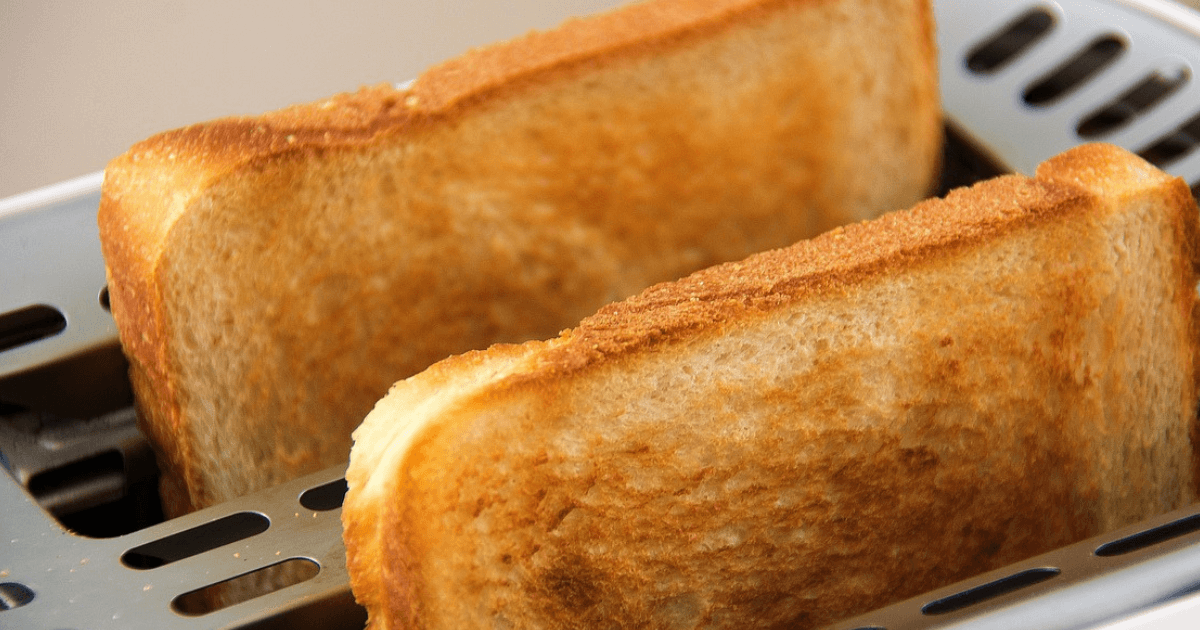Whole wheat bread is a popular choice for healthier eating habits due to its superiority over white or enriched bread, which is made from refined flour. Whole wheat bread contains the entire wheat kernel, including the bran, germ, and endosperm, which is essential for digestive health, blood sugar regulation, and promoting fullness. Its nutritional value is higher than refined bread, as it contains more fiber, vitamins, minerals, and antioxidants. Fiber is crucial for digestive health, regulating blood sugar levels, and promoting a feeling of fullness.
Whole wheat bread also has a lower glycemic index, causing a slower and more stable increase in blood sugar levels after consumption. This is beneficial for individuals with diabetes or those seeking sustained energy throughout the day. The appeal of whole wheat bread lies not only in its nutritional superiority but also in its potential to contribute to overall well-being and healthier dietary choices.
Contents
- 1 Understanding Whole Wheat Bread
- 2 Health Benefits of Whole Wheat Bread
- 3 Debunking Myths: Is Whole Wheat Bread Healthier?
- 4 Comparing Whole Wheat Bread to White or Enriched Bread
- 5 Factors to Consider
- 6 Expert Opinions and Research Findings
- 7 Practical Tips for Choosing Bread
- 8 Addressing Concerns: Gluten Sensitivity and Celiac Disease
- 9 The Role of Moderation
- 10 Consumer Awareness and Marketing Strategies
- 11 Recipes and Alternatives
- 12 Impact on Weight Management
- 13 Real-life Experiences and Testimonials
- 14 Conclusion
- 15 FAQs (Frequently Asked Questions)
Understanding Whole Wheat Bread
Whole wheat bread is a unique product due to its production process, which includes the entire wheat kernel, including the starchy endosperm and nutrient-rich bran and germ layers. This approach ensures a holistic representation of the grain’s nutritional profile. In contrast, white bread is made by stripping away the bran and germ components, leaving only starchy endosperm. This process results in a nutritional powerhouse, utilizing the collective benefits of its constituent parts.
The bran contributes dietary fiber, B vitamins, and antioxidants, while the germ offers essential fatty acids, vitamins, and minerals. These elements support various aspects of health and well-being. On the other hand, white bread, with its refined flour foundation, lacks the comprehensive nutritional profile of whole wheat bread. It forfeits a significant portion of the grain’s inherent goodness, reducing its nutritional value. The distinction between whole wheat and white bread goes beyond appearance or taste, focusing on nutrition and health.

Health Benefits of Whole Wheat Bread
Whole wheat bread is a nutritional powerhouse due to its high fiber content, which contributes to overall well-being. It aids in digestive health by promoting regularity and preventing constipation, reducing the risk of digestive disorders like diverticulosis and hemorrhoids. Fiber also stabilizes blood sugar levels, especially beneficial for those with conditions like diabetes or insulin resistance. It slows down glucose absorption, preventing sharp spikes and crashes, promoting a balanced energy profile.
Fraction in whole wheat bread also influences satiety, or the feeling of fullness after eating. It takes longer to digest, reducing the likelihood of overeating or snacking between meals. This fiber intake can aid in weight management, appetite control, and healthier eating habits.
The lower glycemic index of whole wheat bread compared to white bread enhances its appeal as a dietary staple. This lower glycemic index means that carbohydrates are digested and absorbed more slowly, resulting in a gradual release of glucose into the bloodstream. This gentle rise in blood sugar levels supports stable energy levels and mitigates the risk of insulin resistance and type 2 diabetes over the long term.
In conclusion, whole wheat bread offers numerous benefits for overall well-being, including digestive health, blood sugar regulation, satiety, and overall well-being.
Debunking Myths: Is Whole Wheat Bread Healthier?
Whole wheat bread is often misunderstood for its health benefits, with some believing it offers little to no advantage over white bread and others expressing concerns about its carbohydrate content. However, research consistently shows that whole wheat bread has a positive impact on various health aspects. It promotes heart health by lowering cholesterol levels and reducing the risk of cardiovascular diseases, as the soluble fiber found in whole wheat bread helps to lower LDL cholesterol levels, safeguarding against atherosclerosis and coronary artery disease.
Wheat bread is also a steadfast support for weight management, as its fiber-rich nature promotes feelings of fullness and satiety, while contributing to stable blood sugar levels, curbing cravings and reducing overeating. Incorporating whole wheat bread into a balanced diet can facilitate weight loss and maintenance efforts, supporting overall health and well-being.
Wheat bread has also been shown to mitigate the risk of chronic diseases, such as type 2 diabetes and certain types of cancer. Its high fiber content and low glycemic index regulate blood sugar levels, reducing insulin resistance, and minimizing the risk of developing diabetes over the long term. Additionally, the abundant antioxidants found in whole wheat bread protect against oxidative stress and inflammation, which are implicated in the pathogenesis of various cancers.
Comparing Whole Wheat Bread to White or Enriched Bread
Whole wheat bread, made from the entire wheat kernel, is rich in nutrients such as vitamins, minerals, antioxidants, and dietary fiber, which are not present in white or enriched bread. White bread is made from refined flour, which reduces its fiber, vitamins, and minerals. Enriched bread, while fortified with certain vitamins and minerals, falls short in terms of fiber content and overall nutritional value.
Healthily, whole wheat bread has a higher fiber content and lower glycemic index, which aids digestion, promotes satiety, and regulates blood sugar levels. This makes it a beneficial choice for weight management or blood sugar control. The lower glycemic index also causes a slower increase in blood sugar levels, leading to better blood sugar control and reduced risk of insulin resistance over time.
In conclusion, whole wheat bread is the superior choice in terms of nutritional content and potential health benefits, offering individuals the opportunity to enhance their diet with essential nutrients and support their overall health and well-being.
Whole wheat bread has a smaller spike in glucose levels compared to white bread due to its higher fiber content, particularly insoluble fiber found in the bran. This slows down the absorption of carbohydrates during digestion, allowing glucose release to occur at a more gradual pace.
In contrast, white bread lacks the fiber content, leading to a more rapid breakdown of carbohydrates and a sharp increase in blood sugar levels. This can pose challenges for individuals with diabetes, as it may require more frequent insulin administration or medication adjustments to maintain stable blood sugar levels. Opting for whole wheat bread can help manage blood sugar levels, reduce the risk of sudden fluctuations, and contribute to long-term blood sugar control and overall well-being.
Factors to Consider
Whole wheat bread, despite its numerous health benefits, may not be suitable for everyone, especially those with specific dietary needs or conditions like gluten sensitivities or celiac disease. Consuming gluten-containing foods can trigger adverse reactions, such as mild discomfort, severe digestive issues, and autoimmune responses. To avoid these effects, it is essential to choose gluten-free alternatives made from grains like rice, quinoa, or oats.
The nutritional value of bread products is also influenced by processing and additives. Some commercially available whole wheat breads may contain added sugars, preservatives, or artificial ingredients, which can diminish their healthfulness and negate some of the benefits associated with whole grains. Processing methods also affect the nutritional content, with refined whole wheat flour undergoing more extensive processing than minimally processed whole grain bread.
When selecting whole wheat bread or any bread product, it is crucial to read ingredient labels carefully and opt for options with minimal processing and additives. Choosing bread made from 100% whole wheat flour or other whole grains can maximize nutritional benefits while minimizing potential negative effects on health.

Expert Opinions and Research Findings
Whole wheat bread is a popular choice for health professionals and nutritionists due to its high fiber content, which aids digestion, supports weight management, and regulates blood sugar levels, reducing the risk of chronic diseases like diabetes and heart disease. It also contains vitamins, minerals, and antioxidants that support the immune system.
However, excessive consumption can lead to an imbalance in nutrient intake or weight gain. To maximize the health benefits of whole wheat bread, it is essential to consume it in moderation and diversify grain choices. This approach ensures a diverse range of nutrients and minimizes the risk of developing sensitivities or intolerances to specific grains. Overall, whole wheat bread is a cornerstone of a nutritious diet, offering numerous health benefits.
Practical Tips for Choosing Bread
When choosing bread, it’s crucial to read labels carefully to ensure you’re selecting a product with whole grains as the first ingredient. Whole grain breads are rich in fiber, vitamins, minerals, and antioxidants, which are essential for digestive health, immune function, and reducing the risk of chronic diseases.
Experimenting with different types of bread can add variety and ensure you’re getting a diverse array of nutrients. Sprouted grain bread, made from sprouted grains before being ground into flour, increases nutrient availability and reduces antinutrient content. Gluten-free breads, made from alternative grains like rice, quinoa, or millet, are suitable for those with gluten sensitivities or celiac disease.
Incorporating a variety of bread types into your diet offers a variety of flavors, textures, and nutritional benefits. Selecting breads made from wholesome ingredients ensures that your body is nourished with the nutrients it needs to thrive.
Addressing Concerns: Gluten Sensitivity and Celiac Disease
Gluten-sensitive individuals or those with celiac disease often seek gluten-free alternatives to wheat-based products. Rice, a versatile grain, is a popular choice for gluten-free diets due to its mild flavor and versatility. Quinoa, a superfood with high protein content, is a nutritious and satisfying alternative to wheat. Oats, although inherently gluten-free, can be subject to cross-contamination during processing. To ensure safety, it is essential to select certified gluten-free products.
These oats undergo rigorous testing and manufacturing practices to prevent contamination with gluten-containing grains. Other gluten-free products and ingredients include flours, pasta, bread, and baked goods. By checking for gluten-free certification on packaging and being vigilant about potential cross-contamination, individuals can confidently incorporate these alternatives into their diets while safeguarding their health and well-being.
The Role of Moderation
Whole wheat bread is a nutritious food that can provide numerous health benefits, but it is essential to consume it in moderation and with a balanced diet. Overindulging in whole wheat bread can lead to imbalances in nutrient intake and weight gain. Consuming too much whole wheat bread without proper portion control can result in an energy surplus, leading to weight gain.
It may also displace other nutrient-rich foods, depriving the body of essential vitamins, minerals, and other beneficial compounds. Whole wheat bread also offers valuable dietary fiber, but excessive intake can cause gastrointestinal discomfort like bloating, gas, and diarrhea. To minimize these risks, it is crucial to incorporate a variety of fiber sources into the diet. Consuming whole wheat bread in moderation and with other nutrient-dense foods from all food groups can help individuals benefit from its nutritional value while minimizing the potential downsides of overconsumption.

Consumer Awareness and Marketing Strategies
In today’s saturated market, consumers must be cautious when examining labels like “healthy” or “natural” to avoid misleading claims. These labels can be overly simplistic and mask the true nutritional value of the product. To make informed choices about food purchases, consumers should become informed about nutrition and understand how to interpret ingredient lists and nutritional information. This helps them distinguish between nutritious options and those that may be less beneficial or misleading.
When evaluating a product’s claims of being “healthy” or “natural,” consumers should scrutinize the ingredient list for hidden additives, preservatives, or excessive amounts of sugar, salt, or unhealthy fats. The order of ingredients listed can provide valuable insights into the product’s composition. Additionally, examining the nutritional information panel can provide a more comprehensive understanding of the product’s nutritional profile, including key metrics like calories, serving size, macronutrient composition, and essential vitamins, minerals, and dietary fiber.
By understanding and evaluating food labels, consumers can make educated choices that align with their nutritional goals and dietary preferences, promoting better health outcomes and fostering a sense of empowerment and autonomy over their food choices.
Recipes and Alternatives
Whole wheat bread offers numerous versatile and delicious recipes that can elevate your meals and nourish your body. From satisfying sandwiches and wraps to hearty salads and flavorful breakfast dishes, there are endless options available. Sandwiches and wraps can be filled with fresh vegetables, lean proteins, and spreads like hummus or avocado for a quick and easy meal. Whole wheat tortillas or lavash can be used for handheld delights.
For lighter options, whole wheat bread can be used as a base for hearty salads, transforming ingredients like panzanella salads with ripe tomatoes, cucumbers, and fresh herbs into a satisfying meal. Breakfast can be a nutritious and filling experience, with whole wheat French toast or cinnamon raisin bread pudding for a decadent weekend treat or a nutritious breakfast sandwich featuring whole wheat toast, scrambled eggs, avocado, and a sprinkle of cheese.
Experimenting with ancient grains like quinoa, farro, or bulgur can open up culinary possibilities, as can incorporating alternative flours like almond flour, coconut flour, or chickpea flour. By incorporating whole grains into your diet, you can discover a wealth of delicious and nutritious ways to enjoy whole wheat bread and other whole grains, elevating your meals and nourishing your body.

Impact on Weight Management
Whole wheat bread is a valuable part of a weight-conscious diet, but portion control is essential for maintaining a balanced diet. Pairing whole wheat bread with lean proteins, healthy fats, and vegetables can create satisfying and nutrient-rich meals that support satiety and contribute to weight management goals.
When incorporating whole wheat bread into meals, use it as a foundation for balanced sandwiches or toast, with open-faced options for control and filling with lean protein sources like grilled chicken, turkey, or tofu. Vegetables like lettuce, tomatoes, cucumbers, and bell peppers enhance flavor and texture, while adding volume and fiber.
Incorporating healthy fats into meals can enhance satiety and provide essential nutrients. Top whole wheat toast with avocado slices, nut butter, or olive oil for added flavor and richness. Lean proteins, such as grilled fish, lean cuts of poultry or meat, eggs, tofu, or legumes, can help stabilize blood sugar levels and promote muscle growth and repair.
Finally, incorporating colorful and nutrient-dense vegetables like leafy greens, broccoli, carrots, and peppers can add volume, fiber, and essential vitamins and minerals to your meals. These vegetables not only contribute minimal calories but also provide essential nutrients and antioxidants that support overall health.
Real-life Experiences and Testimonials
Whole wheat bread has been linked to numerous health improvements, including enhanced digestion and increased energy levels. This is due to its high fiber content, which promotes regularity and prevents constipation by aiding in food movement through the digestive tract. This leads to a more comfortable and efficient digestive process, alleviating symptoms like bloating, gas, and discomfort.
The complex carbohydrates in whole wheat bread provide a steady and sustained source of energy, combating fatigue and supporting optimal physical and mental performance. They maintain stable blood sugar levels, preventing energy crashes and promoting sustained energy levels. Furthermore, whole wheat bread can improve mood and overall well-being due to its diverse array of nutrients, including vitamins, minerals, antioxidants, and phytonutrients, which support mental health and cognitive function.
However, individual responses to dietary changes can vary, so it’s crucial to listen to your body and make choices that align with your unique needs and preferences. If you experience adverse reactions or discomfort after consuming whole wheat bread, it may be worth exploring alternative options or consulting a healthcare professional to determine the best course of action.
In conclusion, while whole wheat bread has shown positive health benefits, it’s essential to approach dietary changes mindfully and attentively. By making informed choices and listening to your body, you can harness the transformative potential of whole grains while supporting your overall health and vitality.
Conclusion
In conclusion, 100% whole wheat bread stands as a nutritional powerhouse, offering a multitude of health benefits that make it a valuable addition to a balanced diet. While it may not possess miraculous qualities, its robust nutritional profile far exceeds that of white or enriched bread. By making informed choices and embracing variety in your diet, you can harness the benefits of whole grains and cultivate improved health and well-being overall.
FAQs (Frequently Asked Questions)
1. Is whole wheat bread suitable for people with gluten sensitivities?
– While whole wheat bread contains gluten, there are gluten-free alternatives available for individuals with sensitivities or celiac disease.
2. Can whole wheat bread help with weight loss?
– Whole wheat bread can be part of a weight-conscious diet when consumed in moderation and balanced with other nutritious foods.
3. Are there any downsides to eating whole wheat bread?
– Some people may experience digestive discomfort or bloating if they’re not used to consuming high-fiber foods. It’s essential to drink plenty of water and gradually increase fiber intake to minimize these effects.
4. What’s the difference between whole wheat bread and multigrain bread?
– Whole wheat bread is made from flour that contains the entire wheat kernel, while multigrain bread may contain a variety of grains, but they may not necessarily be whole grains.
5. How can I tell if a bread product is truly whole wheat?
– Look for whole wheat or whole grain as the first ingredient on the label. Be wary of terms like “wheat flour” or “enriched wheat flour,” as these indicate refined grains rather than whole grain

